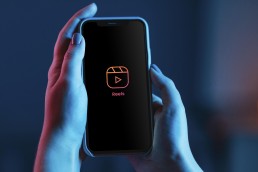Social media is a fantastic place for establishing your brand’s visibility and fan base. You can also develop an unmistakable voice and identity through social platforms. However, to maintain this consistent identity, you must adhere to a social media style guide.
A social media style guide is a roadmap for your brand’s social media presence. And it will connect to your brand’s marketing standards. Additionally, your style guide needs to be a dynamic document that changes as time goes on.

This post is for you if you’ve wanted to create a social media style guide but aren’t sure how to get started. This guide will cover everything from the importance of a style guide to the components you should include.
What Is a Social Media Style Guide?
The go-to resource for how your brand should appear and behave on social platforms is a social media style guide. It influences how you create content for several channels and affects how consumers view your brand.
It’s also critical to understand that a social media marketing strategy differs from a social media guide. Your strategy will mainly include tactical information, such as how frequently you intend to generate material to achieve your objectives.

On the other hand, your style guide outlines how those actions should be portrayed and communicated via your brand voice.
The importance of having a style guide
A social media style guide helps you communicate with your audience in a consistent manner, which increases the legitimacy of your brand. As your social team learns how to represent your brand and minimise error, it also helps prevent failures and awkward moments.
A style guide also makes onboarding new staff simple. For instance, your style guide makes it simple for new hires to understand how to represent your business when they join your social media team. Additionally, it gives them the ability to contribute to the team immediately.

The Elements of a Social Media Style Guide
The next step is creating a style guide now that you know what it is and why you need one. Every company has a style guide specific to its brand and can include many elements.
But some style guide components are essentially universal. So be sure to include all of the following in yours:
The style guide tl;dr
The tl;dr (too long; didn’t read) section of your style guide is the first section. If someone doesn’t want to read the complete style guide, this section should help summarise it; thus, it’s crucial.
Use these tips when writing the tl;dr:
- Make sure your tone is authentic, engaging, and relatable.
- Generally, write concisely.
- Use hashtags, multimedia, and emojis with consideration and purpose.
- Don’t change a word’s spelling or punctuation to fit more characters.
- Avoid using the singular first person.
Voice and tone
While tone describes the various ways you can use your brand’s voice, voice is the overall sound that best represents your brand’s personality. Simply put, you always have the same voice, but your tone occasionally varies.
Also, consistency across all social platforms is crucial, just like every other aspect of your business. For instance, if you are amusing and lighthearted on Facebook, but all your Twitter tweets are sombre and formal, it sends the wrong message to your audience.

However, there is space for language customisation across social sites. Think of it this way if you’re trying to figure out how to describe your brand’s voice.
What voice would your brand have if it were an actual human being? Furthermore, how would they like to be viewed? It could be friendly, wise, self-assured, or supportive. Put your chosen brand voice in your social media style guide once you decide.
Grammar and terminology
Guidelines for grammar aren’t simply for your websites. You should also adhere to specific grammar rules when posting on social media.
A grammar guideline encompasses all internal language, abbreviations, and other elements that contribute to the coherence of your text. Depending on your brand’s requirements, you can be as specific as you wish. Also, many guidelines from your website’s or blog’s grammar manual may apply to your social media style guide.
Formatting
Some brands use specific formats for sharing links and status updates. Tweets, for instance, might have the following structure: title, links, and hashtags. Or you can post your hashtags in the comment section of an Instagram photo rather than the caption. Thanks to these details, your team will find it easy to share content.
Hashtags
The manner that different brands employ hashtags varies. While some businesses squeeze as many hashtags as Twitter will let them into a tweet, others use Instagram’s hashtag-free-for-all feature to reach a wider audience.

You can keep things organised by laying out any brand-specific hashtags and how your team should use them in your social media posts. Additionally, while establishing branded hashtags, consider their purpose and the platforms on which you’ll be using them. Use your core brand hashtags frequently to become more well-known to your audience.
Visual guidelines
Given the visual nature of most social networks, your social media style guide should establish limitations and guidelines for any graphics you share.
The following are the two basic categories of visuals to include in your style guide:
- Photos, graphics, GIFs, and videos within posts
- Images for the profile, cover, and header
You can also include the following in your visual guidelines:
- Colours of the brand
- Typefaces for graphics
- Appropriate colour scheme
- Photographs of your office and employees
- Logos
Your brand’s design team may have already specified most of these in your overall brand style, but particular campaigns will necessitate customisation.

Breaking news
Your brand must be aware of how it is seen on social media in today’s connected world, especially regarding breaking news topics. The presence of a strategy in your style guide can prevent your company from appearing insensitive.
If you’re writing about breaking news:
- Keep up with current events before posting social media content.
- For significant breaking news events, pause your posting queue.
- Ask your team members for their opinions if you are unsure whether the news is important enough.
Emoji usage
Emojis are the best way to add humour and personality to social media posts. You can pick an emoji that fits your brand’s tone, no matter what it is.

Here’s how to use emojis in your social media posts:
- Position them at the end of a line, not at the start or the middle
- In tweets and answers, use them frequently and lavishly.
- Depending on your brand’s identity, they might not be appropriate to use in posts on LinkedIn and Pinterest.
Summary
You can get inspiration for your own social media style guide by using the pointers and examples in this guide. Additionally, remember that your guide should be a dynamic resource that is constantly expanding and changing. As a result, use the sections mentioned in this guide as your starting point and adjust them to suit your needs.
Kamran Shukurlu
Kamran is a T-shaped eCommerce Digital Marketer and Content Strategist with 9+ years of experience in 30+ industries. A few of the companies that benefited from his services: Leo Burnett, Translated, Airbnb, Samsung, Huawei, etc.
Related Posts
July 18, 2024
Social SEO: Optimising Your Content for Discovery
July 8, 2024
The Comeback of Long-Form Content
June 5, 2024
How to Import Sounds From TikTok to Instagram?
May 21, 2024
9 TikTok Challenges List And TikTok Trends
February 24, 2024
Pinterest Account Suspended Appeal – How To Do It Right?
February 3, 2024
How to Make Money With Instagram Theme Pages In 2024
January 11, 2024
Resort And Hotel Digital Marketing Campaign Strategy And Ideas
December 26, 2023
New Year and Christmas Interactive Posts and Ideas For Social Media
December 8, 2023
B2B Community Management: Unpopular Opinion To Level Up
November 23, 2023
Feel Good Friday Social Media Posts And Wishes
October 6, 2023
How to Stream Games on TikTok With TikTok Stream Key
September 15, 2023
Creating an Effective Content Calendar
September 15, 2023
10 Tips to Optimize Facebook Page for SEO and Reach More People
September 4, 2023
How to Go Live on TikTok Without 1000 Followers In 2023
August 14, 2023
How Much Does IG Models Make And How To Become One
June 26, 2023
How To Get Verified On LinkedIn In 2023?
March 25, 2023
How to Create a Facebook Group Funnel to Drive Leads
March 19, 2023
How to Mass Archive Instagram Posts in 2023 + Unarchive
March 13, 2023
8 Social Media Community Building Strategies For 2023
February 18, 2023
How To Make Money On Instagram With 500 Followers
February 18, 2023
How to Go Live on LinkedIn – Best Practices and Guides
February 8, 2023
Instagram Guides Examples and Ways to Use Them
February 8, 2023
How to Schedule Instagram Posts Without Third-party App
January 22, 2023
Growth Hacking for Instagram to Get More Followers in 2023
January 20, 2023
How To Upload GIFs on Twitter in 2023
January 3, 2023
What To Do When you go Viral on Instagram
December 23, 2022
How to Spy on Competitors’ Facebook Ads For Free (6 Tools)
December 22, 2022
How to Get More Views on LinkedIn – 10 Tips to Reach More People
December 19, 2022
What To Do Before and After Posting On Instagram
December 14, 2022
How Instagram Search Works: A Comprehensive Guide In 2022
November 15, 2022
Twitter Spaces Analytics: Ultimate Guide to Your Space Insights
November 13, 2022
20 Viral Instagram Reels Hooks To Keep People Watching
October 29, 2022
How To Speed Up Existing Video For Instagram Reels – FOR FREE
October 16, 2022
How to Use Twitter Advanced Search Tool on Mobile
October 16, 2022
7 Instagram Mistakes to Avoid & Here’s Why
October 9, 2022
10 Proven Instagram Story Ideas to Engage Your Audience
September 23, 2022
Social Media Shopping in 2022: What it Promises for Small Businesses
September 20, 2022
Tips to Create a Successful Hashtag Campaign
September 8, 2022
The Top 9 Instagram Tools That Can Boost Your SME’s Visibility
August 28, 2022
How to Regram: The Art of Reposting on Instagram
August 11, 2022
A Checklist to Launch a Rebrand on Social Media
August 7, 2022
The Whys and Hows of Facebook Video Ads
August 7, 2022
How To Write Good Instagram Captions
July 27, 2022
How to Plan Your Social Media Campaigns
May 4, 2022
10 Social Media Myths To Unlearn in 2022
April 11, 2022
Twitter Analytics Tools to Level Up Your Game
March 14, 2022
Monthly Social Media Updates And News – February 2022
February 23, 2022
Social Media in the times of COVID-19: Adapting to a New Normal
February 14, 2022
Monthly Social Media Updates And News – January 2022
February 2, 2022
Optimise Google My Business: An In-depth Guide to Get it Right
January 19, 2022
9 Tips to Sell on Pinterest: Your Branding And ROI Booster
January 12, 2022
Monthly Social Media Updates And News – December 2021
December 10, 2021
Risks And Dangers of Buying Instagram Followers
December 8, 2021
Monthly Social Media Updates And News – November 2021
November 2, 2021
Monthly Social Media Updates And News – October 2021
October 14, 2021
Monthly Social Media Updates And News – September 2021
October 1, 2021
Brief 18 Twitter Hacks You’ll Wish You Knew Earlier
September 23, 2021
Instagram Pre-Launch Strategy 2022: A Proper Guide for Your Product
September 14, 2021
Monthly Social Media Updates And News – August 2021
September 8, 2021
15 Social Media Post Types to Keep Your Content Engaging
September 8, 2021
How to Sell on Facebook Shops and Facebook Marketplace in 2023
August 16, 2021
Driving Traffic From Twitter Straight to Your Blog in 2022
August 13, 2021
The ABCs of Using LinkedIn Videos Like a Pro in 2022
August 11, 2021
Monthly Social Media Updates And News – July 2021
July 29, 2021
Spiral Up Your Engagements With Instagram Carousels
July 17, 2021
Monthly Social Media Updates And News – May 2021
July 5, 2021
How to Mass Delete Instagram Posts in 2022?
April 29, 2021
Monthly Social Media Updates And News: March 2021
April 17, 2021
Latest Social Media Updates And News – 2022
April 17, 2021
Monthly Social Media Updates And News: February 2021
March 31, 2021
How to Choose the Best Competitor Analysis Framework
March 1, 2021
Monthly Social Media Updates And News: January 2021
February 21, 2021
How To Get Unlimited Free Leads For Any Business In UK
February 20, 2021
How to Find Brands That Collaborate With Small Influencers
February 4, 2021
Web Content Development 101 For Small Businesses
January 28, 2021
Monthly Social Media Updates and News: December 2020
January 13, 2021
How To Add A Link To Instagram Story Without 10K Followers
December 14, 2020
6 Testimonial Examples And How To Ask For Them
December 11, 2020
IG Line Break Generator: No Need For it Anymore? (2022)
December 2, 2020
Monthly Social Media News And Updates: November 2020
April 22, 2020
Social media marketing for recruitment agencies
December 23, 2019
How to market your podcast on social media
October 31, 2019
Account-based mindset vs. lead-based marketing
October 22, 2019
The benefits of starting your own podcast
October 14, 2019
What’s the LinkedIn Social Selling Index? (and why you need it)
October 8, 2019
7 ideas to network effectively – and locally
September 26, 2019
5 tips from an influencer to unlock your potential
September 16, 2019
How to create an effective Facebook ad: 7 easy tips
September 7, 2019
3 inspiring marketing campaigns with awesome results
September 1, 2019
Everything you need to know about lead generation
August 28, 2019
Can my brand benefit from a social media calendar?
August 13, 2019
3 basics of KPIs: what to measure and why?
August 9, 2019
5 Story Highlight ideas to totally revamp your Instagram
July 31, 2019
The good, the bad, and the funnel
July 24, 2019
The basics of content marketing – why you need it
July 18, 2019
Primark – how the brand uses social media
July 10, 2019
The evolution of Twitter for social media marketing
July 7, 2019
Discover 3 benefits of WhatsApp Business!
June 28, 2019
How Lululemon uses social media: 5 ideas
June 24, 2019
New Instagram @shop and how it works
June 17, 2019
5 foolproof tools to create a buyer persona
May 29, 2019
3 burning social media trends to watch out for
May 23, 2019
7 ingredients every entrepreneur needs to have
May 13, 2019
5 Social Media Tools: Marketing Made Easy!
April 15, 2019
Wanna kickstart your landing page? 3 reliable tools!
March 26, 2019
3 video marketing tricks to boost engagement
February 26, 2019
A five-star femmepreneur – meet Gretta van Riel!
February 15, 2019
Why Twitter is essential – revamp your marketing strategy today!
February 7, 2019
SEO for Newbies: The Basics
January 22, 2019
4 amazing inbound marketing tools to try now!
January 16, 2019
Everything about ecommerce, decoded!
January 11, 2019
Influencer marketing: why is it crucial?
January 7, 2019
How social media is changing your brain
January 2, 2019
Choosing a signature colour for your brand
December 28, 2018
Advanced Instagram for startups: an effective step-by-step guide
December 1, 2018
Instagram from Scratch!
November 22, 2018
Elevate your Brand with these 4 New Linkedin Tools
January 15, 2018
5 Ways Social Media Can Help Your Small Business In 2018
September 25, 2017
7 indispensable social media tools for small businesses
September 1, 2017
September 2017: Social Media Roundup
February 2, 2017
Our new promotional video
January 17, 2017
Why your business needs to be active on social media
November 3, 2016
The Top 10 Small Fashion Brands on Instagram
September 29, 2016
Hоw Tо Grоw Yоur Smаll Business Uѕing Social Media
September 26, 2016
How can I use social media for customer service?
September 20, 2016














































































































































































